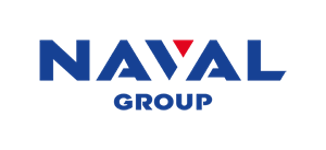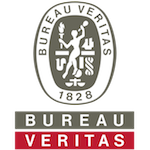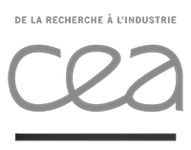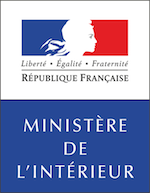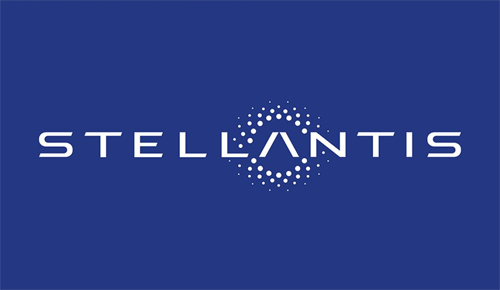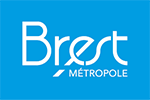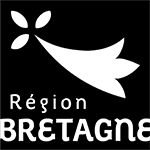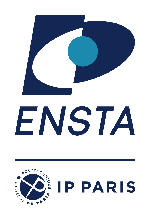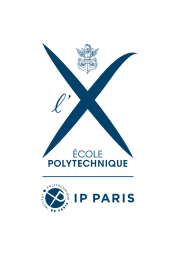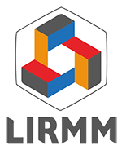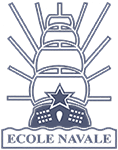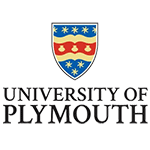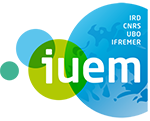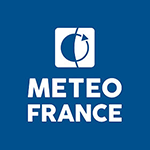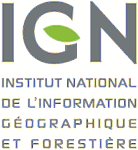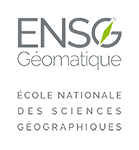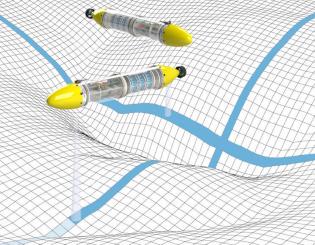
Naval architecture & Marine energies

ENSTA Bretagne offers France's most comprehensive naval architecture and engineering program with the highest enrollment. It also offers, with its partners, a course 100% devoted to marine renewable energies.
All types of ships and platforms: sailing and motor yachts, offshore racing boats, cruise ships, passenger boats, cargo vessels, LNG carriers, container ships, ro-ro ships, offshore platforms, civil professional vessels, military ships, submarines, marine renewable energies platforms (MRE).
All the parameters required for the proper operation of the system are considered: hydrodynamics and aerodynamics, durability, stability, propulsion, structural calculations, maneuverability, seaworthiness, ergonomics, etc.
Innovating for the future also means seeking more environmentally-friendly and more energy-efficient materials and propulsion systems. The Mechanical Science Research Department at ENSTA Bretagne contributes to this effort through the IRDL (Institut de Recherche Dupuy de Lôme), a CNRS Joint Research Center which is leading the way on these issues.
Program strengths
International renown
Each year, the Royal Institute of Naval Architects, in partnership with Bureau Veritas, awards a prize to the top student in this major. Other examples of academic partnerships around the world: United Kingdom (Cranfield University), Australia (Australian Maritime College, University of Australia, Flinders)…
Applied research in support of education
Through the Institut de Recherche Dupuy de Lôme (IRDL) and shared research laboratories with industry, the research work conducted on campus focuses on :
- improving ship performance and in particular on ship-sea interactions, in all conditions, including the most hostile,
- durability of MRE systems at sea in order to reduce their operating costs and on the optimization of their seabed connection,
- the composites used in the naval and MRE sectors. The use of composites, together with a composite-to-metal bonding technique, boosts the competitiveness of the MRE sector. The challenge lies in integrating the life cycle analysis from the design phase to produce systems able to operate durably at sea, with minimal maintenance and optimized dismantling.
They also focus, within the Lab-STICC, on embedded systems, and their adaptability and their reliability.
This applied research is conducted in collaboration with many businesses and organizations in the maritime sector based both in France and around the globe.
Extensive experimental equipment
Digital simulation tools for fluid mechanics and fluid-structure interactions are developed to meet the challenges raised during the naval design phase: advance resistance assessment during the pre-project phase, assessment of the hydrodynamic performance of propulsion systems, behavior of marine structures in swell, structures exposed to impact.
Many scientific studies, ranging in scale from that of the material to that of the entire structure, are validated using our extensive and unparalleled experimental facilities. These facilities, which form the MASMECA platform, at the ENSTA Bretagne campus, are also used by students for applied projects.
In addition, every year hydrodynamics study days are organized at the DGA Techniques hydrodynamiques center and throughout the year at Ifremer's test tanks, situated only a few kilometers from the campus, as part of joint scientific programs.
Deeply invested in developing the maritime sector
In addition to the teaching programs and research on offer, ENSTA Bretagne contributes to the development of the maritime sector by injecting its expertise into numerous networks: as a board member of the Pôle Mer Bretagne-Atlantique, a globally-oriented competitiveness cluster, and as a member of GICAN, the French Maritime Cluster (CMF), the Institut Français de la Mer (IFM) and the business network Bretagne Pôle Naval, as well as France Energies Marines for the development of the MRE sector.
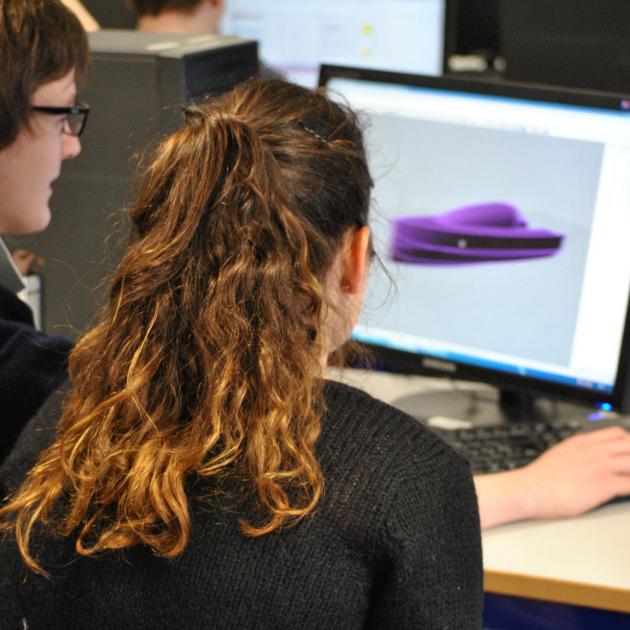
- Learn more about the Naval and Offshore Architecture major offered in our "Diplôme d'ingénieur" program (equivalent to an MSc in Engineering): a 3-year syllabus for BSc or equivalent graduates, or a 2-year program for 1st-year Master's graduates
- Admission
- Learn more about the "Co-operative engineering program"
- Admission: International students wishing to apply to this program must provide documentation proving that they have completed one year of full-time higher education in France.
- Learn more about this advanced master : a 1-year program for MSc graduates (or BSc graduates with several years of professional experience)
- Admission
- Learn more about this advanced master : a 1-year program for MSc graduates (or BSc graduates with several years of professional experience)
- Admission
ENSTA Bretagne and UBO (Université de Bretagne Occidentale) are co-accredited by the French Ministry of Higher Education, Research and Innovation to grant the Master in Physics: Naval Hydrodynamics Specialty.
- Enrollment: UBO
- ENSTA Bretagne Contact: Jean-Baptiste Leroux (1st year) and Pierre-Michel Guilcher (2nd year)
- Learn more about this Master
- a 3-year program for MSc degree holders
.

In the context of student projects, the ship design loop in particular, engineering students in the naval and offshore architecture major make use of dedicated professional software, in partnership with Bureau Veritas, DNV-GL, MARIN, Sistre and NDAR.
There are also many opportunities in the naval sector open to students studying information and communications technology.
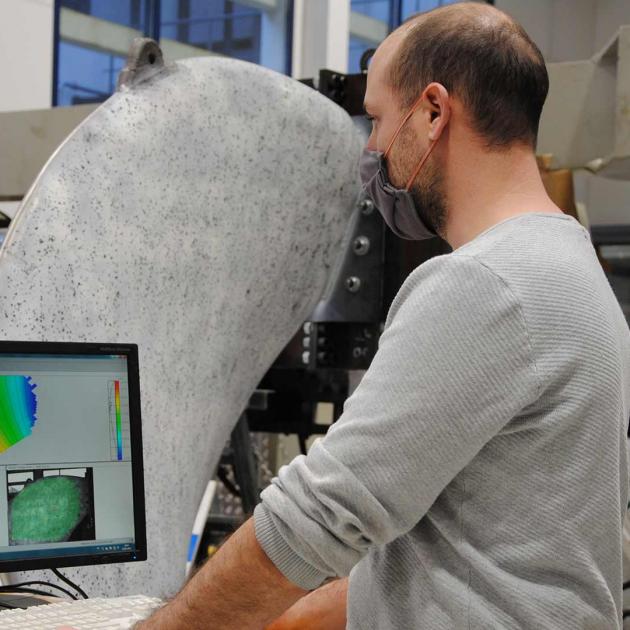
This laboratory is a CNRS joint Research Center. IRDL brings together mechanical science research teams from Université de Bretagne Sud, ENSTA Bretagne, Université de Bretagne Occidentale (UBO) and ENIB. It is internationally recognized for its marine research.
ENSTA Bretagne teams’ involvement is concentrated around 3 research areas.
The mechanics research teams at ENSTA Bretagne form an integral component of IRDL (UMR 6027): the leading research center in marine mechanical systems based in Brittany. It brings together teams from ENSTA Bretagne, Université Bretagne Sud, ENIB, UBO and CNRS.
Using innovative techniques to assemble dissimilar materials, with a view to extending their operating lives in harsh conditions such as the marine environment.
Other main research topics include the fatigue and durability of structures under load, particularly in a marine environment.
ENSTA Bretagne contributes to numerous national and international projects aimed at building cleaner and more reliable, cost-effective and intelligent ships.
- This is the case, for example, of the European Ramsses project, which focuses on the contribution of new materials
- The APPHY project (a French National Research Agency defense research and innovation project) employs analytical models of wave impact loads to obtain more precise structural calculations. This increased precision will help to lighten the weight of ships and lengthen their operational lives.
- Funded by ADEME's Investments for the Future "Ships of the Future" program, the e-PANEMA project uses innovative technologies (electromagnetic techniques, sensors etc.) to improve ships’ safety and efficiency. The project draws on the expertise of Lab-STICC's Information and Communication Technology and Science teams.
contact
contact
contact
Pyrotechnic Systems

The only one of its kind in France, the Pyrotechnic Systems program trains students to analyze and design explosive systems and integrate them in mechanical systems, for purposes such as propulsion.
Its applications cover a broad array of sectors: defense, aerospace (rocket propulsion, satellite launch), automotive (airbags), public works as well as industrial risk prevention.
In this field, innovation focuses mainly on developing more environmentally-friendly and safer energetic materials as well as on reducing blast effects for human and environmental protection. These new trends are included in the syllabus and are the focus of research on campus.
Program strengths
A one-of-a-kind program in France
This is France's one and only pyrotechnics program. It covers compressible and reactive fluid mechanics, dynamic behavior of materials, chemistry of energetic materials, solid propulsion, digital processing and simulation methods, and pyrotechnic regulations.
Constant innovation: the example of bubble curtains
Whether accidental or intentional, underwater explosions generate, at the very least, noise which can be a threat to marine fauna. To tackle this environmental challenge, ENSTA Bretagne researchers at the Institut de Recherche Dupuy de Lôme decided to investigate the use of bubble curtains to attenuate underwater noise generated by human activities (construction work, explosions, etc.).
Applied research to boost learning
Our research work is carried out in partnership with numerous French and international organizations and businesses: Belgian Royal Military Academy, Armasuisse, French-Germany Research Institute of Saint Louis, Nobel Sport, Livbag, SNECMA, Ariane Group…
Extensive testing equipment
ENSTA Bretagne has extensive experimental facilities to study dynamic phenomena: shock wave propagation, combustion, blast.
Examples of testing equipment: shock machine (compression, torsion and tension), Taylor gun, laser, etc.
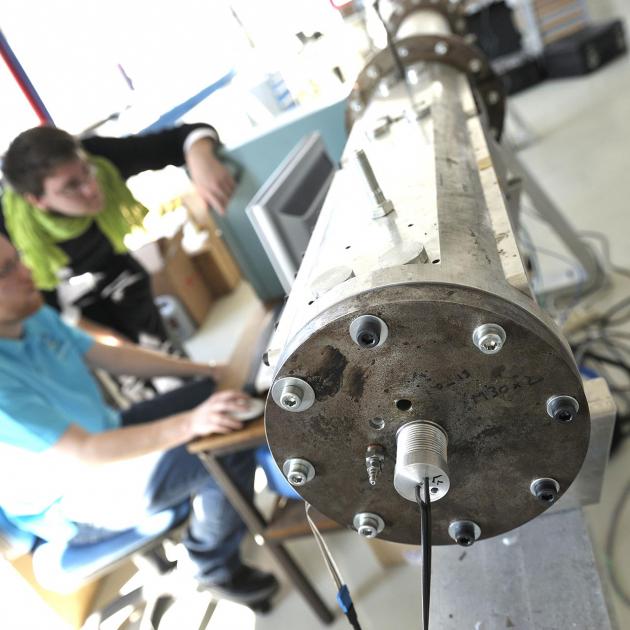
- Learn more about the Pyrotechnic Systems major offered in our "diplôme d'ingénieur" program (equivalent to an MSc in Engineering): a 3-year syllabus for BSc or equivalent graduates, or a 2-year program for 1st-year Master's graduates
- Admission
Cette spécialité est offerte aux élèves Polytechniciens dans le cadre de leur 4e année.
- Découvrir ce parcours en systèmes pyrotechniques
- Learn more about this advanced master: a 1-year program for MSc graduates (or BSc graduates with several years of professional experience)
- Admission
- a 3-year program for MSc degree holders
- Enrollment in ENSTA Bretagne and affiliation with the SPIN doctoral school and IRDL (Joint Research Center 6027 of the CNRS)
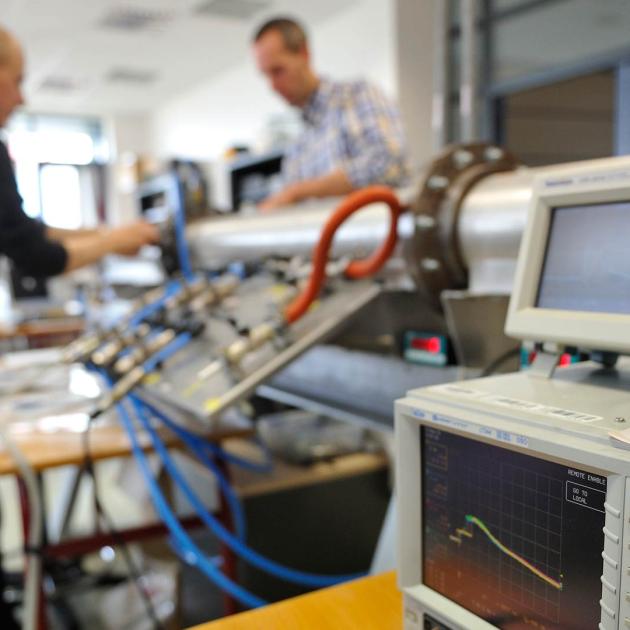
This laboratory also hosts researchers from Université de Bretagne Sud (UBS), Université de Bretagne Occidentale (UBO), ENIB (École Nationale d'Ingénieurs de Brest) and CNRS.
Pyrotechnics research at ENSTA Bretagne is focused on defining shock wave properties and on reducing the effects of explosions in diphasic environments.
Every year, numerous pyrotechnics-related theses are pursued at ENSTA Bretagne.
Some thesis examples:
- Studying and modeling low- and high-speed impacts on satellite materials and structures
- Shock wave propagation in aerate d liquid: modeling and implementing air bubble curtains
- Establishing a methodology to predict the effects of explosions on infrastructure
contact
contact
Vehicle Architecture
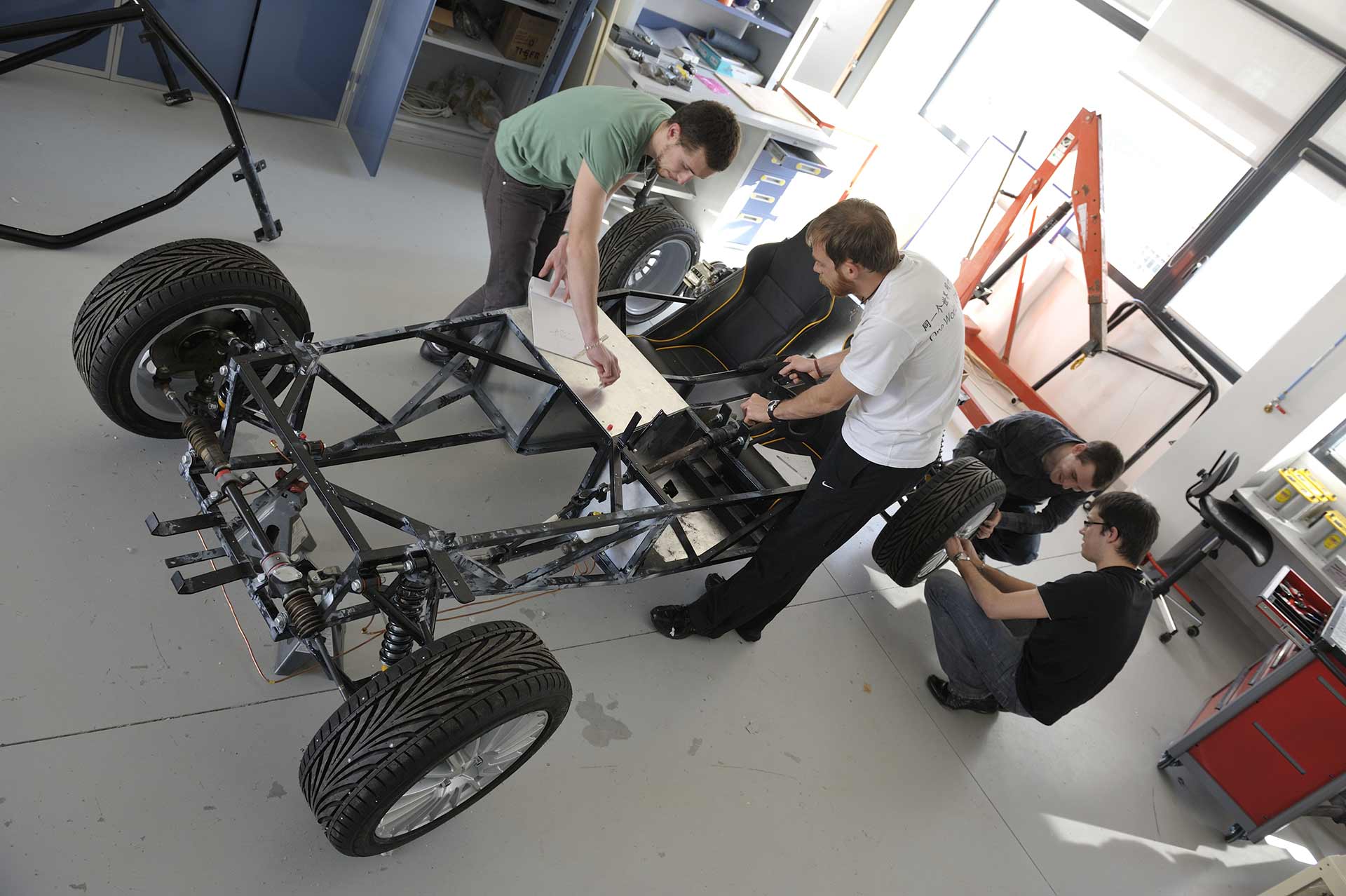
Our vehicle architecture courses offer a comprehensive approach to vehicles: vehicle design and architecture, engine and motor systems, vehicle dynamics, power transmission, system engineering, etc.
The programs and research conducted in relation to vehicles cover a broad spectrum: from everyday cars to the most innovative designs, from two-wheelers to the most sophisticated industrial vehicles (earthmoving and farming machinery, military vehicles, etc.). A large proportion of the methodologies developed can also be applied to the aeronautic industry.
The researchers in ENSTA Bretagne's Mechanical Science Department work on materials, assemblies and structures with a view to reducing vehicles' weight and environmental impact.
In information and communication science and technology, research work is also conducted on embedded intelligence, sensors, signal processing and human-machine interfaces. All these topics are fundamental building blocks for the development of autonomous vehicles.
Program strengths
Teaching and research with close ties to the automotive industry
Student projects, internships, applied research: automobile manufacturers and parts suppliers work closely with ENSTA Bretagne. The school provides them with scientific insight, a broad range of engineering skills and draws upon their challenges to train the innovators of tomorrow.
High-ranking international partners
Through partnerships with CTU in Prague, TU Chemnitz and HAN in Arnhem, ENSTA Bretagne offers an International Master in Automotive Engineering. Students on this 2-year program study at 2 different campuses and earn a double degree
Prizes and awards
Each year, our students majoring in vehicle architecture win awards in national and international competitions: Shell Eco-Marathon, SIA Trophy, NAE Challenge…
A strong push for the automotive industry
ENSTA Bretagne contributes to the development of the French automotive industry as a board member of the ID4MOBILITY competitiveness cluster. Through its research, it also takes part in the PSA Computational Mechanics OpenLab
Constant innovation boosted by extensive trial facilities
Our research programs are carried out within the framework of the IRDL laboratory (Institut de Recherche Dupuy de Lôme, see Research section below).
Scientific advances are made through close collaboration with numerous businesses in the automotive industry. These results are validated using the extensive experimental facilities available on campus. What's more, these experimental initiatives offer students outstanding opportunities to implement applied projects.

- Learn more about the Vehicle Architecture major offered in our "diplôme d'ingénieur" program (equivalent to an MSc in Engineering): a 3-year syllabus for BSc or equivalent graduates, or a 2-year program for 1st-year Master's graduates
- Admission
Cette spécialité est offerte aux élèves Polytechniciens dans le cadre de leur 4e année.
- Découvrir ce parcours en Architecture de véhicules
- Learn more about this Master in Automotive Engineering (equivalent to an MSc): a 2-year program for BSc or equivalent graduates
- Admission
- a 3-year program for MSc degree holders.
- Enrollment in ENSTA Bretagne and affiliation with the UBL-SPI doctoral school and IRDL (Joint Research Center 6027 of the CNRS)
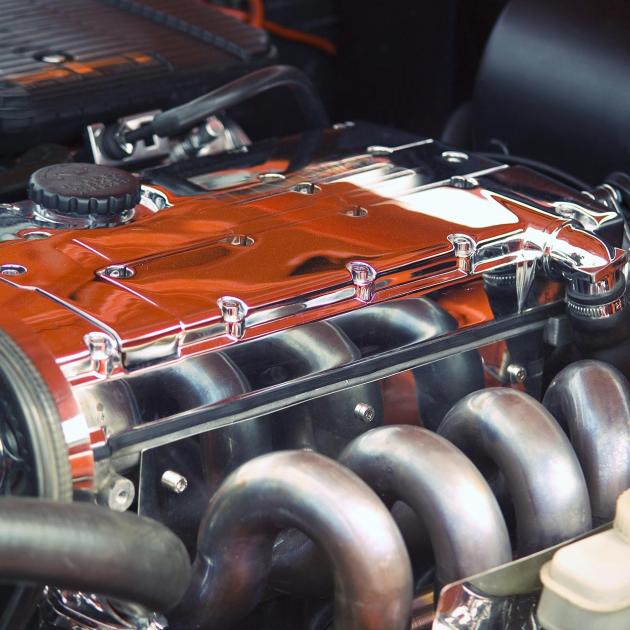
Applied mechanical science studies in the automotive and land vehicles sector are conducted through this laboratory renowned for its original and ambitious scientific goals, and for its close ties with businesses.
ENSTA Bretagne lecturers’ fields of interest and research cover fatigue, resistance, deformation and more generally, the behavior of materials and structures in service.
This area of study is critical in validating the choices made to reduce vehicle weight, to reduce consumption and pollution.
- Example of a thesis: Predicting the thermo-oxydative degradation of elastomers for automobile antivibratories (Industrial partner: Vibracoustic)
Bonding, welding, additive manufacturing, sintering, assembling…the automobile sector never ceases to enhance its manufacturing processes in order to improve road, environmental and economic performance
- Example of a thesis :Multi-scale characterization of the interfacial fracture of bonded assemblies for automobiles
contact
contact
Design of Computing Systems

This program focuses on the design of communicative digital systems, including telecommunications, digital circuits, IT and security. Taking a systemic approach to security (cybersecurity, operating safety and personal data protection) enables the design of more reliable and durable systems.
The many research projects carried out by ENSTA Bretagne's Lab-STICC research professors feed back into the program. Researchers develop high-quality methodological approaches based primarily on software engineering for embedded systems and on model-driven engineering related to cybersecurity issues.
Program strengths
A comprehensive program on the cutting edge of cybersecurity
Program courses cover all the bases, from software and hardware architecture modeling and using sensor-collected data, to telecommunication implementation and software development.
System security (electronic and software) is integrated right from the initial design stage.
High-level research partnerships
At Brittany's Pôle d'Excellence Cyber, ENSTA Bretagne intervenes in fields ranging from antennas and analog channels to threat analysis.
ENSTA Bretagne's IT, software radio and cybersecurity research professors participate in numerous R&D programs with civilian and military firms both in France and abroad.
This research team contributes to the Lab-STICC shared research lab, a CNRS joint research center to which ENSTA Bretagne is the 3rd most important contributor.
Renowned experts and extensive experimental facilities
Reflecting its close ties to the defense sector, ENSTA Bretagne focuses high-level skills on modeling IT and cybersecurity systems, and has created a secure systems experimentation and study platform.
Every year, new equipment is added to this platform through the strategic Cyber SSI program, funded under the 2015–2020 State-Region Project Contract (CPER).
This €2.5 million investment has made it possible for the platform to acquire a calculator, a supervisory control and data acquisition system (SCADA) and a radio frequency bench.
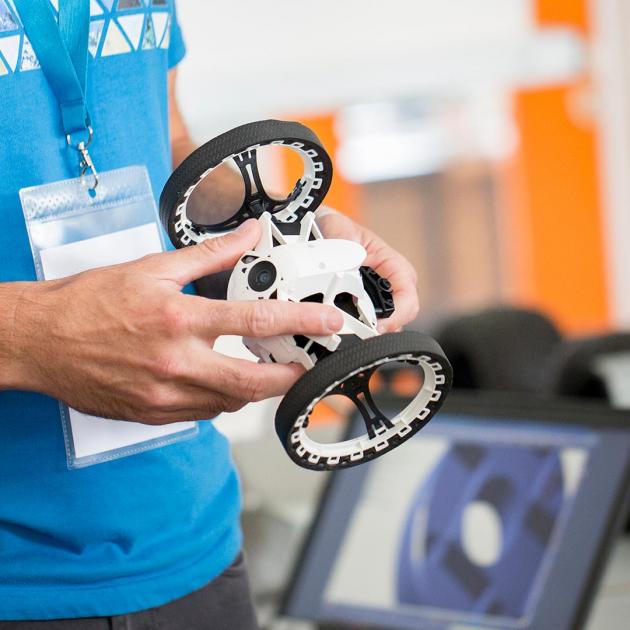
- Learn more "Design and computing systems" major (equivalent to an MSc in Engineering): a 3-year syllabus for BSc or equivalent graduates, or a 2-year program for 1st-year Master's graduates
- Admission
Cette spécialité est offerte aux élèves Polytechniciens dans le cadre de leur 4e année.
- Découvrir ce parcours en Systèmes numériques et sécurité
- a 3-year program for MSc degree holders (for engineering or Master's degree graduates in hydrography, oceanography, positioning, remote sensing, etc).
- Enrollment in ENSTA Bretagne and affiliation with the SPIN doctoral school and Lab-STICC (Joint Research Center 6285 of the CNRS)
The Master in Computer Science: Interactive, Intelligent and Autonomous Systems Specialty is granted by ENSTA Bretagne, UBO (Université de Bretagne Occidentale), ENIB and IMT Atlantique.
- Enrollment: UBO
- ENSTA Bretagne Contact: Joël Champeau
- Learn more about this Master

This internationally-recognized lab is an important player in its socioeconomic environment and brings together researchers from 6 partner establishments: ENSTA Bretagne, IMT Atlantique, ENIB, UBO, UBS and CNRS.
ENSTA Bretagne participates in 7 of the 11 scientific teams working in the lab, making it the 3rd largest contributor.
- "Cyber-security modelling and analysis framework" research project : Developing a cohesive framework for the specification, formalization and analysis of secure software and hardware architecture
- In progress since December 2020
- Funded by the AID (Defense Innovation Agency)
- This research program is led by Raul Mazo Pena, a research professor at ENSTA Bretagne / Lab-STICC (SHARP Department, P4S team)
- Find out more
- KER-SEVECO: Connected Vehicle Security
- Project funded by the Brittany Region and FEDER
- Started at the end of 2019 until 2022
- 3 partners: KEREVAL, Mobility Tech Green and ENSTA Bretagne
- Led by: Joël Champeau, a research professor at ENSTA Bretagne, UMR (joint research unit) Lab-STICC (SHARP department, P4S team
- Theses
contact
contact
contact
Autonomous Robotics
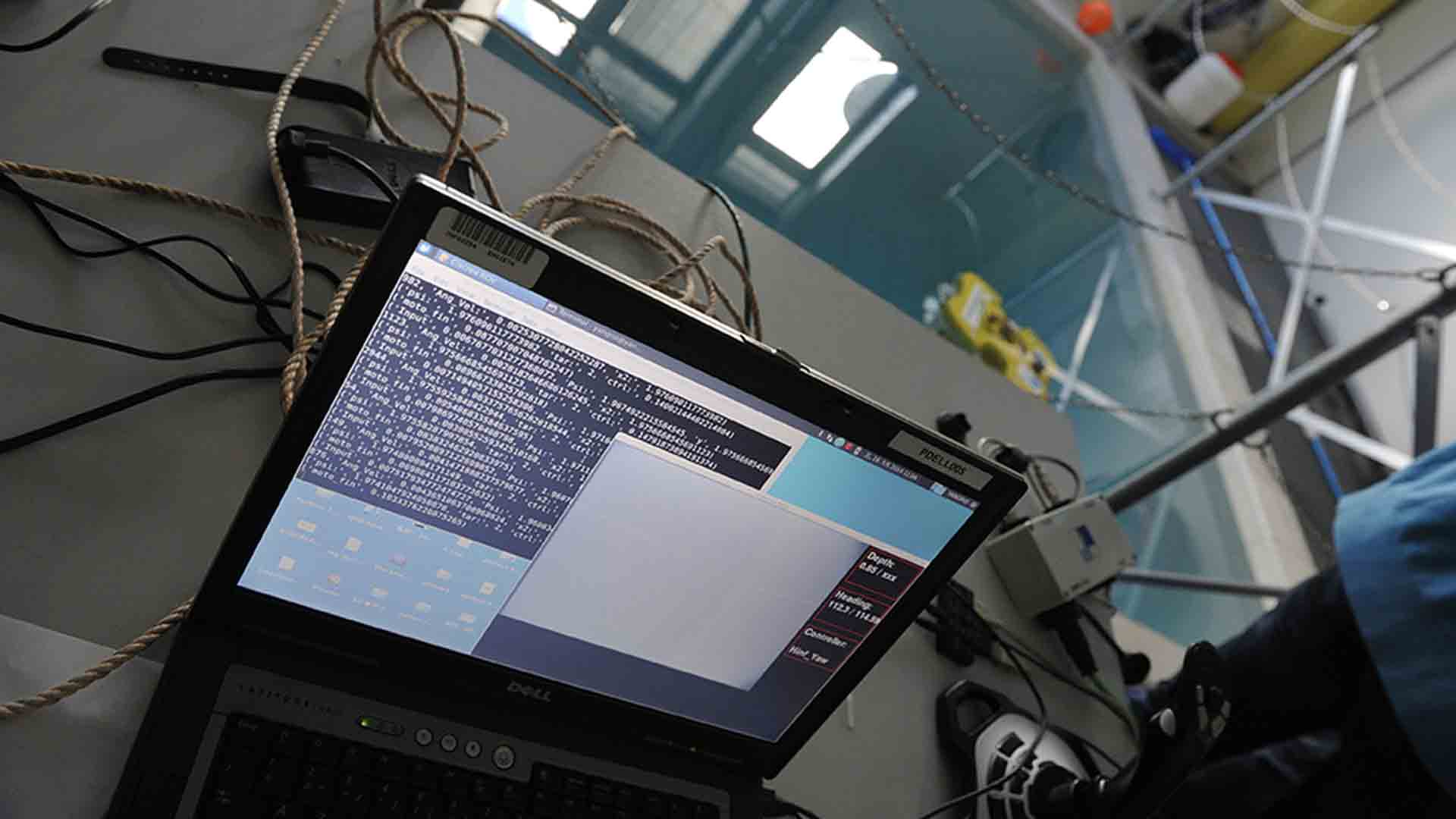
Robotics is a field of the future that reflects the multidisciplinary nature of ENSTA Bretagne.
Research at ENSTA Bretagne delves more particularly into the challenges of autonomous, mobile and underwater robotics: how can the robot be located? Monitored? How can a fleet of robots be coordinated? … in complex environments like the marine setting.
Multidisciplinary skills need to be brought together to tackle the issues encountered. On the one hand, physics of the marine environment, sensors, design of mobile platforms and programming are required to design robots. On the other, localization and control algorithms enable creation of their embedded intelligence.
The multiple scientific challenges involved in this work (robot autonomy, coordination, stealth, etc.) form the basis of numerous research projects at ENSTA Bretagne, for which it partners with innovative small businesses and corporations in France and abroad.
Program strengths
Prizes and international recognition
- 1st prize in the 2016 European Student Autonomous Underwater Vehicles Challenge (SAUC-E)
- 1st and 2nd prize in the World Robotic Sailing Championship (2018, 2015, 2014 and 2013)
- 7th prize in the 2015 European euRathlon competition for a project that involved several robots to carry out missions in hostile environments
Prix Moore
- In 2012, Luc Jaulin, an ENSTA Bretagne research professor, received the R.E. Moore Prize for Applications of Interval Analysis for his work on autonomous robotics.
The Guerlédan project: field experimentation for robotics students and hydrographers
Every year, hydrography and robotics majors visit the artificial lake at Guerlédan dam to carry out joint experiments in the field.
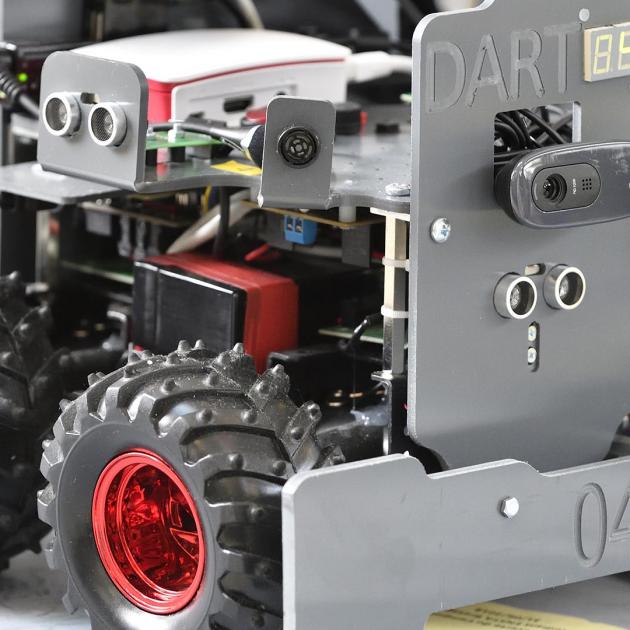
- Learn more about the Autonomous Robotics major offered in our "diplôme d'ingénieur" program (equivalent to an MSc in Engineering): a 3-year syllabus for BSc or equivalent graduates, or a 2-year program for 1st-year Master's graduates
- Admission
Cette spécialité est offerte aux élèves Polytechniciens dans le cadre de leur 4e année.
- Découvrir ce parcours en robotique mobile
- a 3-year program for MSc degree holders
- Enrollment in ENSTA Bretagne and affiliation with the SPIN doctoral school and Lab-STICC (Joint Research Center 6285 of the CNRS)
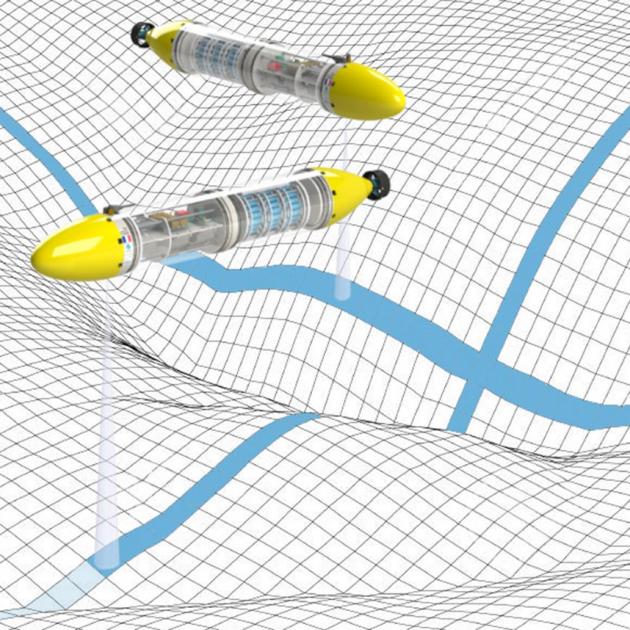
Algorithm development for autonomous mobile robots used in physical environment perception (especially in marine environments) on both axes of the perception-action loop:
- Action in an uncertain and unstructured environment: Robust control, localization and planning (sensors, robots) through interval analysis, organization of drone swarms.
- Dynamic perception: Processing spatially and temporally distributed data, characterizing the environment and its uncertainty, capitalization.
- Lab-STICC is a CNRS joint research center (UMR 6285) with 600 members from ENSTA Bretagne, IMT Atlantique, ENIB, UBO, UBS and CNRS.
- ENSTA Bretagne is the third most important contributor to this shared lab
- Robust, accurate and reliable localization of underwater robots
- Securing an area with robots
- Controlling underwater drone swarm
contact
contact
contact
Observation Systems and AI

In response to the needs of civilian and military firms and public organizations, ENSTA Bretagne has focused its extensive expertise on designing embedded systems, multi-sensor observation systems and advanced data processing technology for decision support.
These research and training programs bring together skill sets in electronic systems, software, systems engineering, automation, AI, design and simulation, signal and image processing, etc.
Many current fields of application require a background in these fields: for example, underwater environment monitoring, space remote sensing, maritime surveillance and security, autonomous vehicle driver assistance systems, drone navigation, mobile telecommunications, etc.
Program strengths
At the heart of technology
Collecting, processing and interpreting large and heterogeneous volumes of data, assisting in decision-making, and managing tight constraints (autonomy, durability, security, etc.): designers of intelligent multi-sensor systems face multiple technological challenges.
Many of ENSTA Bretagne's Lab-STICC (UMR CNRS 6285) research professors explore these topics in their work.
Research partnerships with industry
Shared laboratories with Thales and research programs and theses pursued in common with innovative companies put ENSTA Bretagne right at the heart of R&D programs in France and abroad.
Continuous innovation drawing on extensive experimental facilities
ENSTA Bretagne researchers have access to the campus' extensive experimental facilities. Recent acquisitions have amplified research potential in the fields of cybersecurity and robotics, most notably.
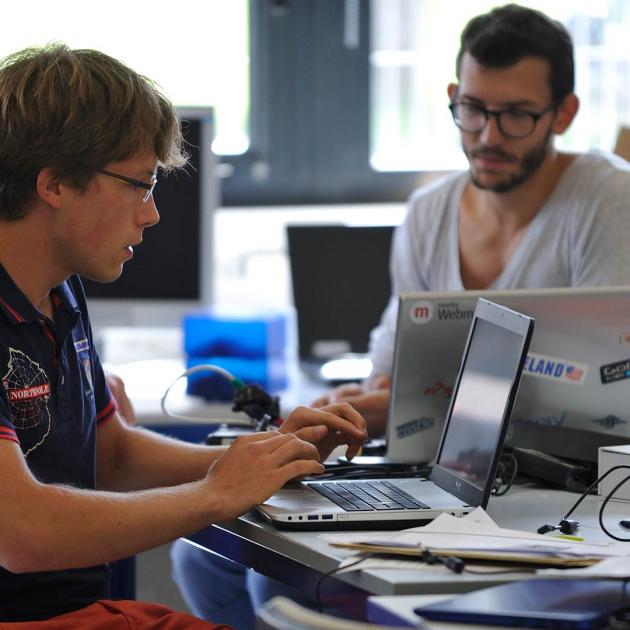
- Learn more about the "Observation Systems and Artificial Intelligence"major (equivalent to an MSc in Engineering): a 3-year syllabus for BSc or equivalent graduates, or a 2-year program for 1st-year Master's graduates
- Admission
- Learn more about the "Embedded Systems" major
- Admission:
- International students wishing to apply to this program must provide documentation proving that they have completed one year of full-time higher education in France.
Cette spécialité est offerte aux élèves Polytechniciens dans le cadre de leur 4e année.
- Découvrir ce parcours en Systèmes d'observation et intelligence artificielle
- Learn more about this advanced master : a 1-year program for MSc graduates (or BSc graduates with several years of professional experience)
- Admission
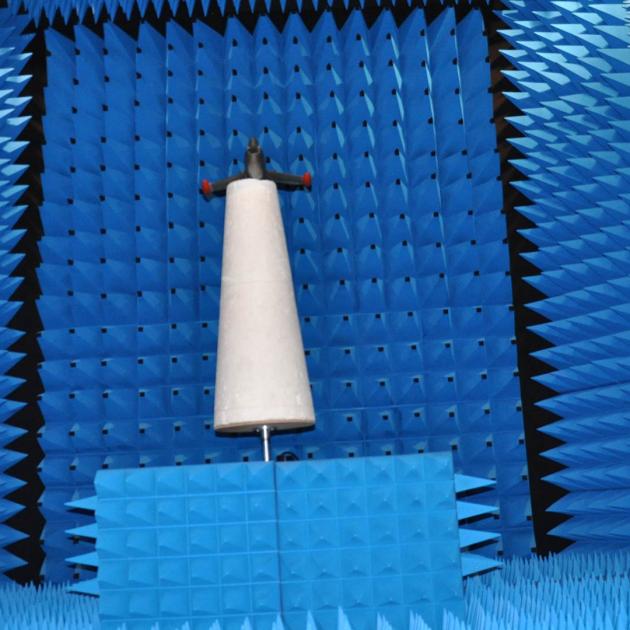
CNRS’ Lab-STICC joint research center brings together 600 members from six establishments (ENSTA Bretagne, IMT Atlantique, ENIB, UBO, UBS and CNRS).
Physics of electromagnetic and acoustic waves, embedded optical communication systems (radar, SAR, sonar, hydrophones, etc.), information processing, decision theory, and artificial intelligence.
ENSTA Bretagne's Lab-STICC (ICST lab) PhD students are enrolled in ED MathSTIC in the following fields:
• Automation, robotics
• Signals, imagery, telecommunications
• Electronics
• IT
contact
contact
contact
Hydrography and Oceanography
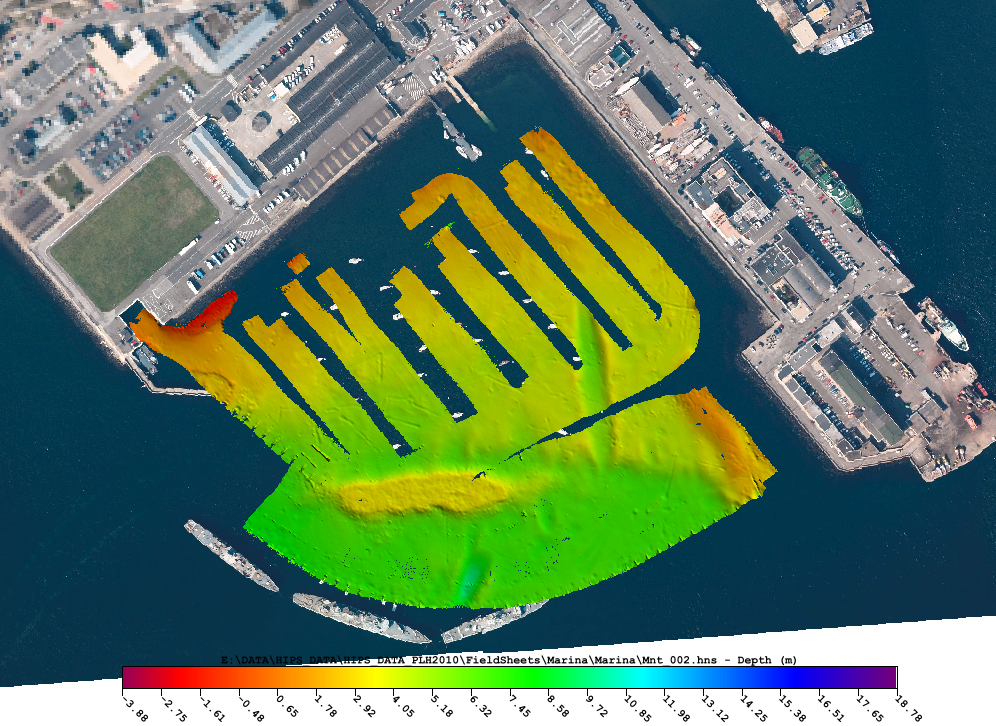
Hydrography and Oceanography ?
These disciplines encompass the methodologies of water body (oceans, seas and lakes) and watercourse measurement and description necessary for all human activities at sea and along coastlines and rivers. These can include shipping safety, port and coastline development projects, offshore infrastructure installation (platforms, turbines, etc.), underwater infrastructure inspection, and monitoring water levels in flood risk areas.
- The goal of hydrography is to map underwater topography (water levels and relief). It deals with the entire information chain, from data gathering at sea to map making.
- Oceanography is concerned with the dynamic mechanisms of the water column: currents, waves and tides.
Program strengths
International acclaim
ENSTA Bretagne's internationally-acclaimed Category A (highest level) Hydrography program is the only one of its kind in France.
Top-quality certification
This discipline is governed by international standards which allow for data sharing and guarantee data accuracy. Training is monitored by three global bodies which form the FIG/IHO/ICA Advisory Board: the International Federation of Surveyors, the International Hydrographic Organization and the International Cartographic Association.
Brest: The heart of hydrography
The French navy founded its hydrographic and oceanographic service (SHOM) in 1720. Today, SHOM and ENSTA Bretagne bring together France's top experts in this field.
Career prospects
• Public organizations (SHOM, Ifremer, other research institutes and international organizations)
• Coastal and offshore hydrographic survey companies
• The marine and river energy sector (oil and gas, marine renewable energies and hydroelectric)
• Dredging and specialized construction (coastal, port and river)
• Engineering firms (development, monitoring)
• Marine engineering (technology and software development)
- Learn more about the Hydrography and Oceanography major offered in our "Diplôme d'ingénieur" program (equivalent to an MSc in Engineering): a 3-year syllabus for BSc or equivalent graduates, or a 2-year program for 1st-year Master's graduates
- Admission
Cette spécialité est offerte aux élèves Polytechniciens dans le cadre de leur 4e année.
ENSTA Bretagne is co-accredited to grant the degrees:
- The Master in Physics: Physics of the Ocean and the Climate Specialty
- The Master in Physics: Marine Geophysics Specialty
- The Master in Physics: Data Science Speciality
- Applications: UBO
- Contact ENSTA Bretagne : Amandine Nicolle
- Find out more
- a 3-year program for MSc degree holders (for engineering or Master's degree graduates in hydrography, oceanography, positioning, remote sensing, etc).
- Enrollment in ENSTA Bretagne and affiliation with the SPIN doctoral school and Lab-STICC (Joint Research Center 6285 of the CNRS)
• Geomorphometry
• Bathymetric data processing
• Ocean remote sensing
• Hyperspectral imaging
• Acoustics
• Hydro-sedimentary modeling GNSS use in geoscience
• Lab-STICC Joint Research Center (UMR CNRS 6285, ENSTA Bretagne, IMT Atlantique, ENIB, UBO and UBS), PRASYS and TOMS teams
• Joint Research Center for Adaptation and Diversity in the Marine Environment (Roscoff Marine Station, CNRS Sorbonne Université)
• Rabine Keyetieu’s thesis on the calibration of multi-beam echo sounder systems by inverse methods
• Gaspard Minster's thesis on hydro-sedimentary modeling at Raz Blanchard
• Coralie Monpert's thesis on automating submerged vegetation mapping by single-beam echosounder
• The Percebès project on stalked barnacle stock management on the Atlantic coast
• The DIP-Nawdex project on diabatic processes in the North Atlantic






